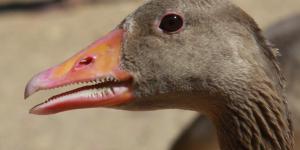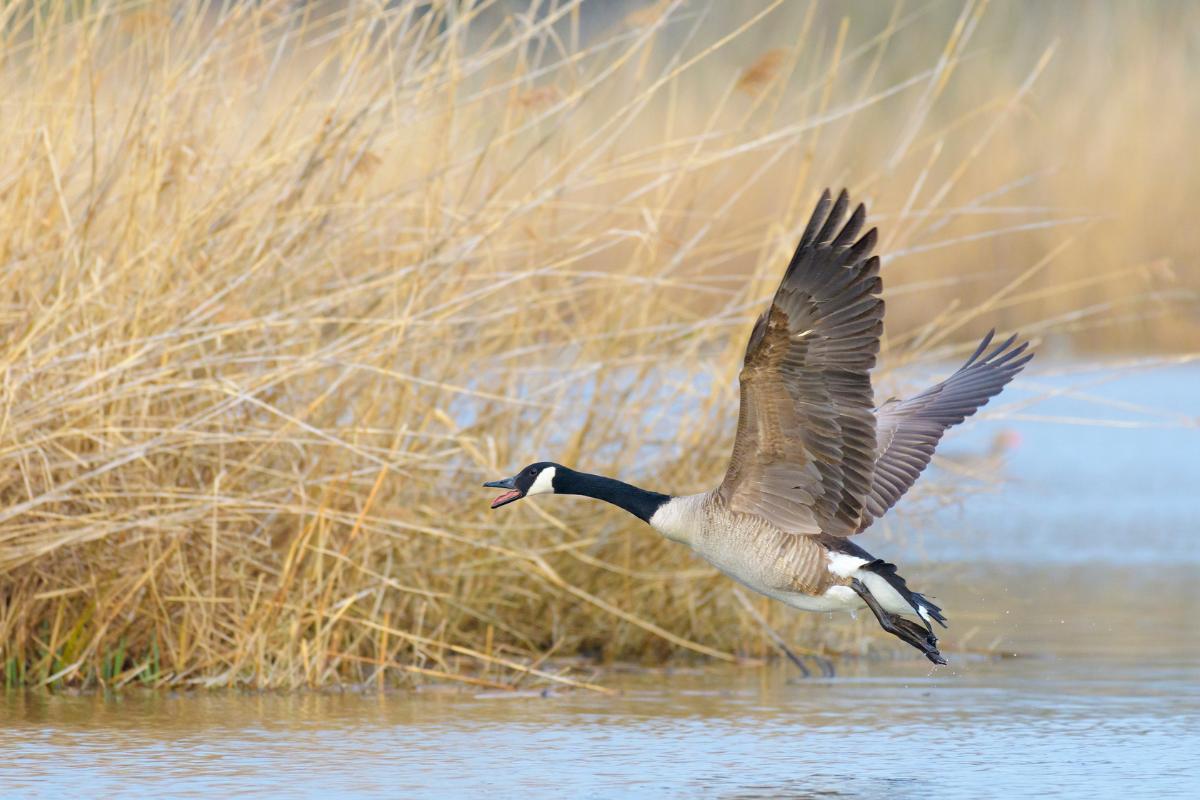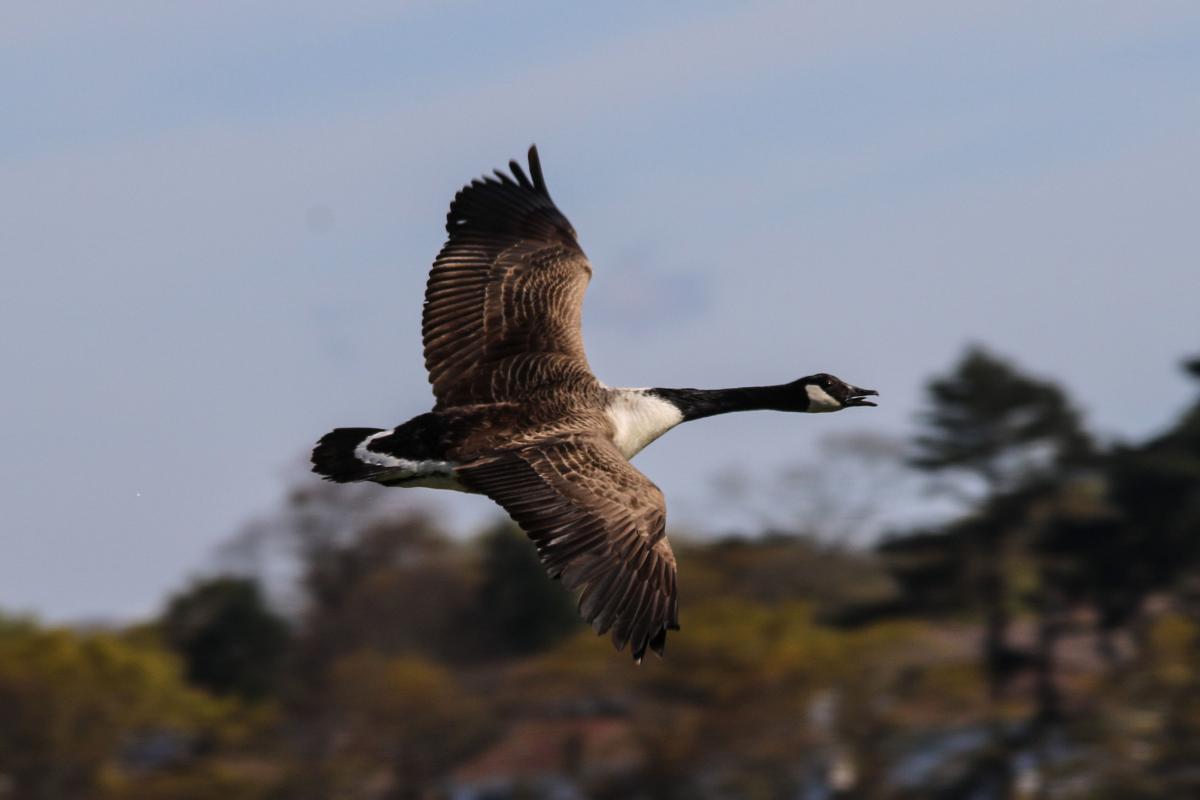Why Do Geese Fly in "v" Formation?


Geese are a type of bird belonging to the family Anatidae, which also includes ducks and swans. Geese are known for their adaptability to various habitats, their impressive migration patterns and their strong social bonds. In fact, geese are being skilled flyers that undertake long-distance journeys between their breeding grounds and wintering areas. They possess strong wings and can travel long distances during their migratory journeys, showcasing their aerial prowess.
In the following AnimalWised article, we will explore everything you need to know about geese flight, including why the mysteries behind why geese adopt the iconic "V" formation during their flights, alongside other intriguing details about their flight patterns.
Can geese fly?
Geese are highly skilled and proficient fliers, known for their impressive aerial abilities. Flying is a natural and essential behavior for geese, enabling them to travel long distances, find suitable habitats, and access food resources.
Geese are remarkable birds characterized by their impressive wingspan, which typically ranges from 147 to 180 cm (58 to 71 inches). This anatomical feature enables them to soar through the skies with ease, showcasing their natural talent for flying. Geese are particularly skilled in migration, a behavior deeply ingrained in their instincts.
During regular flight, geese can maintain speeds of approximately 48 km/h (ca. 30 mph). However, during migration, they can achieve even faster speeds, reaching up to 60 km/h (ca. 37 mph) in certain circumstances. It's important to note that these higher speeds are exceptional and not the norm. In rare instances, geese have been known to achieve an impressive 90 km/h (ca. 56 mph) while flying, but such occurrences are uncommon.
While their aerial abilities are noteworthy, geese also display proficiency on land. They are agile walkers, capable of swift movements that allow them to evade predators or unwanted attention. Taking cues from their duck relatives, geese are equally at home in water. They gracefully float and navigate using their webbed feet, finding comfort and ease in aquatic environments.
You might be interested in this other article, where we explain the differences between swans vs. geese vs. ducks.
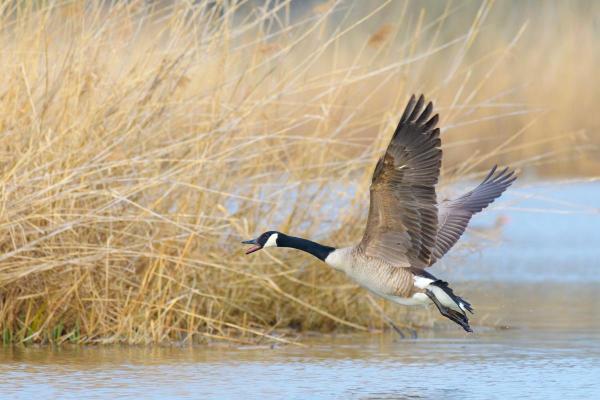
How do geese fly?
As mentioned before, these wild birds possess exceptional aerial abilities, which are essential for their marked migratory patterns. Geese have long, narrow wings that are well-suited for efficient flight.
When geese take off, they typically run across the ground or water, flapping their wings vigorously to generate enough lift to become airborne. Their powerful leg muscles propel them into the air, and once they achieve sufficient lift, they extend their wings fully.
During sustained flight, geese rely on continuous flapping of their wings to maintain altitude and propel themselves forward. They use their strong pectoral muscles to power their wingbeats. The downward stroke provides the main propulsion, while the upward stroke helps maintain stability and lift.
When in flight, geese typically position their wings in a slightly dihedral shape, forming a slight "V" angle. This wing position aids stability and helps maintain the characteristic V-shaped flight formation when flying in flocks.
Geese are skilled at gliding, using their wings to catch and ride air currents. By adjusting the positioning and angle of their wings, they can take advantage of updrafts and thermals, which provide additional lift and help conserve energy. Gliding allows geese to cover longer distances with minimal effort.
While birds are widely recognized for their remarkable ability to fly, it may come as a surprise that there are certain bird species that are flightless. If you're intrigued by these fascinating avian creatures, we invite you to explore our other article dedicated to flightless birds.
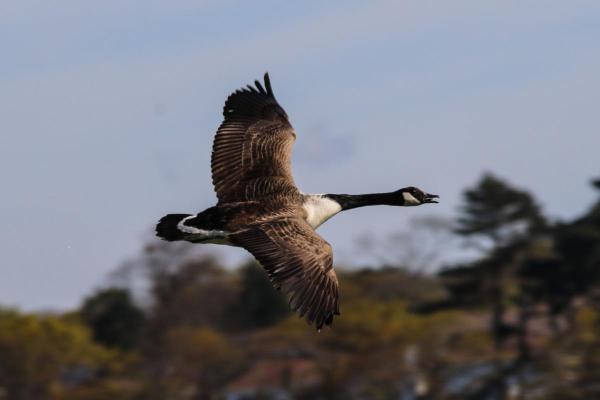
Why do geese fly in a v formation?
Geese are known for their iconic V-shaped flight formations, which have captivated the curiosity of observers for generations. The primary reason behind this unique flying pattern lies in the principles of aerodynamics and the benefits it offers to the geese as they embark on their migratory journeys.
This formation provides several advantages. The lead bird takes the brunt of the wind resistance, creating a slipstream that reduces drag for the geese flying behind. This aerodynamic configuration enables the flock to conserve energy during long flights.
The bird positioned at the front of the V formation bears the brunt of the wind resistance and sets the pace for the group. By flapping their wings vigorously and frequently, they create a "draft" or a flow of air that aids the birds flying behind them. This drafting effect allows the trailing geese to conserve energy by experiencing reduced air resistance, making their flight more efficient.
Another benefit of flying in a V formation is enhanced communication within the flock. The formation facilitates visual and vocal communication, allowing geese to stay connected and maintain cohesion during their long-distance journeys. The clear line of sight enables the birds to monitor and respond to the movements of their fellow flock members, enhancing coordination and navigation as they traverse vast distances.
Geese also exhibit a fascinating team dynamic while flying in a V formation. When the leading bird becomes fatigued, it will drop back and allow another member to take the lead position. This rotation allows each goose to experience the more challenging role of flying at the front, while benefiting from the energy-saving position of the V formation for the majority of the flight.
Organisms are interconnected and rely on each other for survival and success. Geese exemplify this cooperative process, showcasing the beauty of shared effort in the tapestry of life.
Did you know that swans also adopt a V-shaped flight formation? Learn more about these fascinating birds in this other article about swans and the different types that exist.
When do geese fly?
Geese are primarily diurnal birds, which means they are most active during the daylight hours. They typically engage in flight and other activities, such as feeding and socializing, during the daytime. Geese are known to start their day early, often taking flight shortly after sunrise.
In the morning, geese are often observed flying in search of food sources or moving between different habitats. They may fly to fields, meadows, or bodies of water where they can find suitable vegetation or aquatic resources to feed on. Geese are herbivorous and commonly graze on grasses, grains, and other plant matter.
As the day progresses, geese may continue to fly intermittently, particularly if they are searching for new feeding areas or navigating to different habitats. However, they also spend significant periods of time resting, preening their feathers, or floating in water bodies.
When do geese migrate?
Geese typically migrate during specific times of the year, with the exact timing varying depending on the species and geographic location.
In general, geese begin their migratory journey in the autumn or fall season. This timing coincides with the changing weather patterns and decreasing food availability in their breeding grounds. Geese prepare for migration by forming larger flocks and exhibiting behaviors such as increased feeding and energy storage to sustain them on their long journey.
The specific months of migration can vary, but it often occurs between late summer and early winter. For many species, this period can span from September to November in the northern hemisphere. In the southern hemisphere, migration typically occurs during their corresponding seasons.
During migration, geese travel from their breeding grounds to wintering grounds, where they can find more suitable habitat and food resources. The distance and duration of the migration can vary greatly depending on the species and the distance they need to cover. Some geese may migrate relatively short distances within the same region, while others undertake impressive long-distance journeys spanning thousands of miles.
In the spring, geese migrate back to their breeding grounds, returning to their familiar nesting sites to mate and raise their young. The timing of spring migration varies but generally occurs between February and May in the northern hemisphere, depending on the region and species.
It's important to note that while migration is a typical behavior for many geese populations, there are also sedentary populations that do not undertake long-distance movements and remain in their local areas throughout the year. These sedentary geese may only make short movements in response to changing environmental conditions.
If you are interested in learning more about other animals that migrate, don't miss our other article, where we have listed 20 migratory animal species.
If you want to read similar articles to Why Do Geese Fly in "v" Formation?, we recommend you visit our Facts about the animal kingdom category.
- BirdLife International. (2018). greylag goose . The IUCN Red List of Threatened Species 2018. Available at: e.T22679889A131907747. https://dx.doi.org/10.2305/IUCN.UK.2018-2.RLTS.T22679889A131907747.en
- Vargas, S. (2002). " Grey gosling ". Animal Diversity Web. Available at: https://animaldiversity.org/accounts/Anser_anser/

